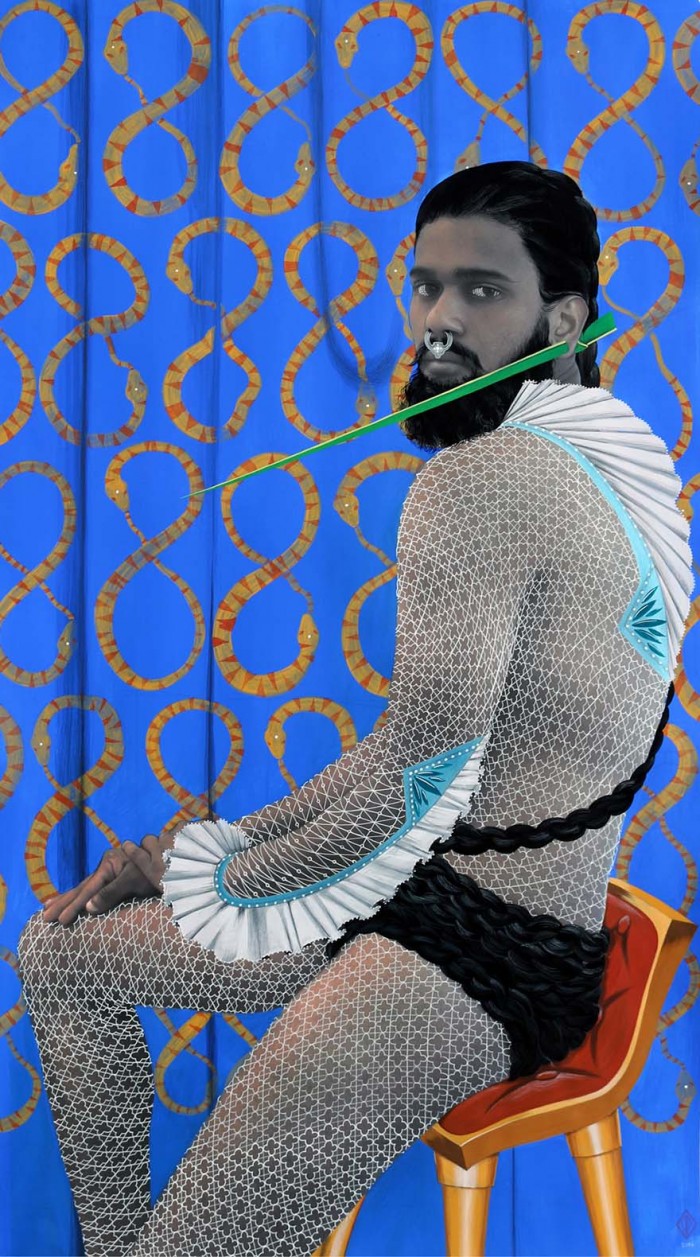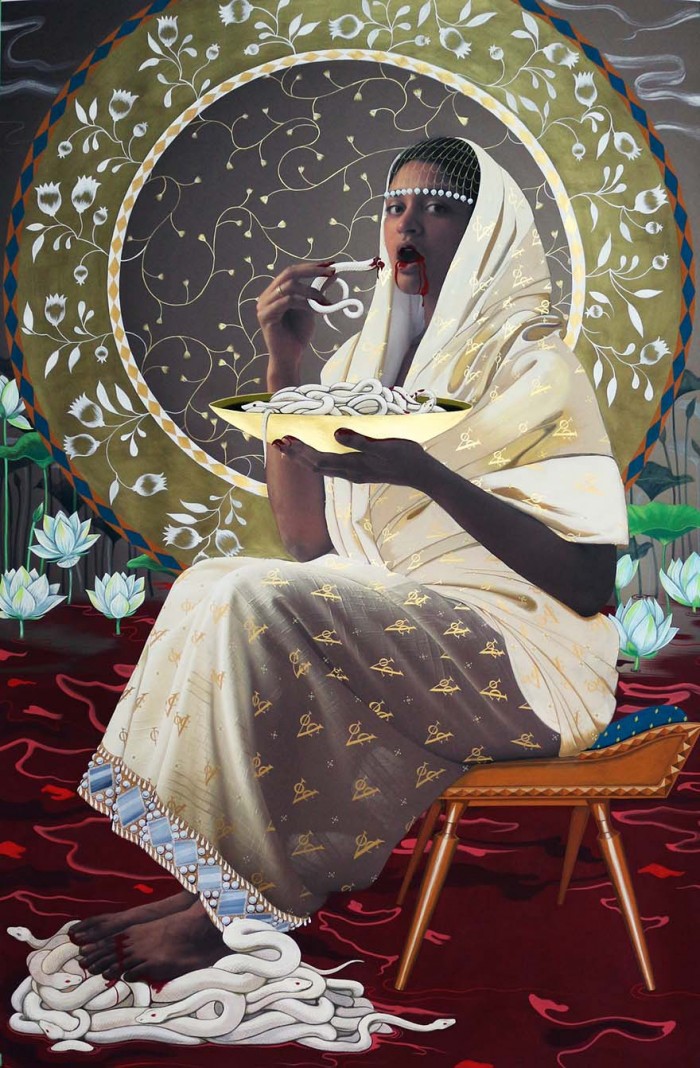According to the UN, there are now 258 million people living in a country other than their country of birth. We’re at a point in history where the mass movement of peoples across cities, countries, continents, has become the norm.
Along with these movements over time, a politically charged, socially aware diaspora has emerged, finally taking charge of their own narratives.
One such artist is Sri Lanka-born, Toronto-based mixed media artist, Rajni Perera. Her work revolves around identity, sexuality and repositioning the brown female body.
Having immigrated to Toronto at age nine, she’d arrived to a place where pop culture only had place for white narratives. She started painting as a way to reimagine the brown female body and give it its own place. This hobby, which would eventually morph into elements of her vocation, was encouraged by her parents, who she credits for always nurturing her creativity. Like most immigrants, they too are responsible for Perera always pushing herself to achieve.
It was in her third year at a predominantly white art school that she realised the urgency of creating her own curriculum. Her's wouldn’t be the kind of art that was just nice to look at.
“I wanted to use my work to push ideas - propaganda, essentially - about reclaiming power, creating our own radical visions about where we belong, come from, and are going. After all, immigrants are the first travellers in time and space,” she says.
Most of her works are comprised of embellished photography, which brings together images, painting and mixed media. Not subtle in its aesthetic nor subject matter, they explore themes of gender, power, ethnicity and fantasy.
The provocatively titled ‘We Come Alive from Eating your Flesh’ is one of her more recent series, and comments on the aftermath of colonialism through the exploration of the throne as symbol of power.
Inspired by her fascination with objects made for empires, she subverts these seats of power by replacing the subject with an unlikely character, a woman, for example. While that position is held by a new kind of power, the throne is surrounded by a river of blood, a damning reminder of the aftermath of colonialism.
It was after the Surreal Body series that the artist decided to give the embellished photography a break, as it started to feel overused. Surreal Body investigates mythology, the occult and divine. Subjects are transformed into animals, monsters and deities, refuting the narratives assigned by mythology, to birth visually arresting visuals of coloured bodies imagined in surreal spaces.
While Parera has been experimenting with a different medium, sculpture, she affirms that her voice will continue to be heard in the conversation of identity politics and immigrant culture:
"I am going to be an active participant till the end of my life, hopefully. I am an immigrant and we are the future of citizenship. The countries choosing to restrict our flow, ban us and limit our progress are taking a fast ride straight to the rear end of progress."









